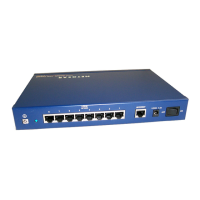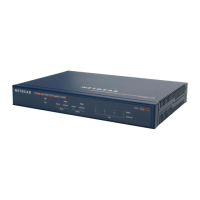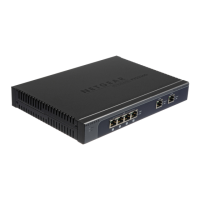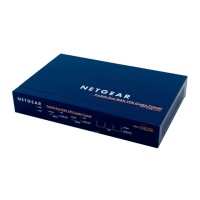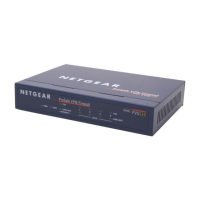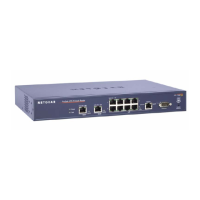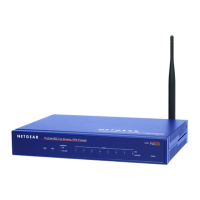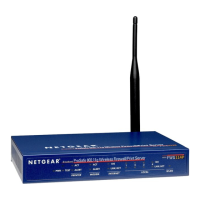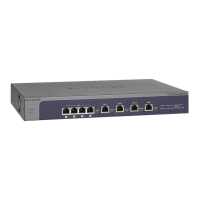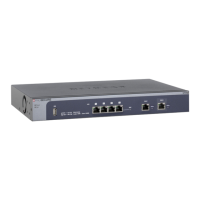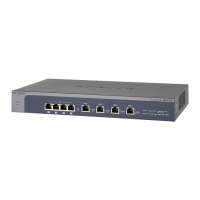IPv4 Firewall Protection
114
ProSafe Wireless-N 8-Port Gigabit VPN Firewall FVS318N
LAN Users These settings apply to a LAN WAN inbound rule when the WAN mode is classical
routing, and determine which computers on your network are affected by this rule. The
options are:
• Any. All PCs and devices on your LAN.
• Si
ngle address. Enter the required address in the Start field to apply the rule to a
single device on your LAN.
• Ad
dress range. Enter the required addresses in the Start and Finish fields to apply the
rule to a range of devices.
• Grou
p. Select the LAN group to which the rule applies. Use the LAN Groups screen to
assign PCs to groups (see Manage the Network Database on page 60).
• For LAN WAN inbound rules, this field is not applicable when the WAN mode is NAT
b
ecause your network presents only one IP address to the Internet.
WAN Users The settings that determine which Internet lo
cations are covered by the rule, based on
their IP address. The options are:
• Any. All
Internet IP address are covered by this rule.
• Single address. Enter the required address in the Start field.
• Ad
dress range. Enter the required addresses in the Start and Finish fields.
DMZ Users The settings that determine which DMZ computers on the DMZ network are affected by
this rule. The options are:
• Any. All
PCs and devices on your DMZ network.
• Si
ngle address. Enter the required address in the Start field to apply the rule to a
single PC on the DMZ network.
• Ad
dress range. Enter the required addresses in the Start and Finish fields to apply the
rule to a range of DMZ computers.
Note: For DMZ WAN inbound rules, this field is not applicable when the WAN mode is
NAT
because your network presents only one IP address to the Internet.
Log The setting that determines whether packets covered by this rule are logged. The options
ar
e:
• Alway
s. Always log traffic considered by this rule, whether it matches or not. This is
useful when you are debugging your rules.
• Ne
ver. Never log traffic considered by this rule, whether it matches or not.
Bandwidth Profile Bandwidth limiting determines the way in which the data is sent to and from your host.
The purpose of bandwidth limiting is to provide a solution for limiting the outgoing and
incoming traffic, thus preventing the LAN users from consuming all the bandwidth of the
Internet link. For more information, see Create Bandwidth Profiles on page 139. For
inbound traffic, you can configure bandwidth limiting only on the LAN interface for a LAN
WAN rule.
Bandwidth limiting does not apply to the DMZ interface.
Table 28. Inbound rules overview (continued)
Setting Description
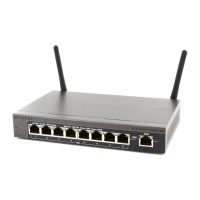
